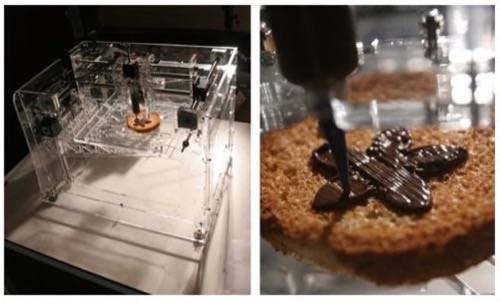Arduino, the open source electronics platform with the adorable name, announced the beta availability of its version 1.0 today, 6 years since it was forked from the nearly 10 year old Wiring platform. Wiring released its 1.0 just three weeks ago.

As these platforms, which turn consumers into creators, reach this important milestone, are people really using them? What’s the community around them like? What is the state of the Maker-o-Sphere, if you will? Looking from the outside, it appears that there is a thriving market of DIY electronics, that education is a high priority for the Maker community and that there’s no shortage of new developments coming to light all the time. I thought I’d take this opportunity to share a few examples.
As 2011 draws to a close, the DIY electronics hacking community has a culture, an economy and a campaign to grow through education of its own and other people.
Maker Holidays
It’s the holiday season and in this part of the world, these holidays are largely about stuff. That’s true among Makers too, but instead of just buying or getting stuff – they’re making stuff. Black Friday was celebrated by the desktop fabrication startup Makerbot Industries too, just a little differently than it was at Walmart.
Fab lovers gathered around the table with friends and family like so many people did for Thanksgiving, but some of them shared laser etched ham, 3D printed turkey and chocolates made in home made molds.

Above: From a holiday blog post by Ponoko, Happy Thanksgiving: A Digitally Fabricated Feast.
The unofficial publication of the Maker movement, Make Magazine, is giving away a different DIY kit to make something or another, including help getting started with Arduino, every day this holiday season.
Electronics shop Sparkfun is doing well enough that they’re upping the ante by 30% this year with $200,000 in free product giveaways in one day next month. Humans only need apply, “sometimes robots can be bad” the company notes.
New Year, New Hacks
What do people do with all this stuff? Maximum PC recently highlighted 25 relatively accessible projects that you can do with an Arduino, including making a really sophisticated, if crazy, magic mirror to put on the wall of your house. Alot of that is just novelty though.
The Arduino-friendly electronics provider Adafruit today highlighted one of its users’ hack of a Comcast universal remote, run through an Adafruit IR decoder plus Arduino, now controling a TV with Siri.
Yesterday a startup called Berg Cloud announced a new product called the Little Printer, which pulls content from websites you use into a little printer that prints out reciept-sized summaries of information of interest to you throughout the day. There’s a cloud services component, too, which other developers can use to make their devices Web connected.
We think of BERG Cloud as the nervous system for connected products. It’s built to run at scale, and could as easily operate the Web-enabled signage of a city block, as the playful home electronics of the future. Not to mention the smart product prototypes that we work with our clients on, in the other side of our design studio.
That’s getting serious.
If the maker industry is ramping up and if new platforms are becoming available to turn what used to be a hobby in the garage into a connected part of the web, will the supply of opportunities lead to more demand for capable Makers than there are in the world? That seems possible.
Education to Build the Future
Maker Faire and Make Magazine founder Dale Dougherty said on Twitter this month that he spoke to a National Science Foundation conference for more than one hundred award-winning sciene and math teachers in Washington D.C. and almost none of them had heard of Maker Faire before. Dougherty’s talk was part of a larger effort by makers to educate the world about the work that can be done.
Jaymes Dec, a Program Manager at a program called GreenFab that teaches South Bronx high school students science and math through green design and fabrication, says he’s convinced his local middle school to adopt a “one-arduino-per-child policy.”
MakerBots are being used in classrooms around the country, too. This and next week Makerbot Industries is offering an advanced course in 3D modeling to educators who have already had experience using a MakerBot in a classroom.
Community self-education is a never-ending part of the Maker movement too.
Make Magazine does a regular live video show and tonights is a tour of 5 different hackerspaces, facilities for hardware and other hacking, located all around the world.
Forbes this month highlighted wearable computer innovator Lynne Bruning, the creator of The eTextile Lounge, “a global hackerspace for wearable computing, soft circuits and electronic textiles” where interested hackers can share tips by live video.
What Could Happen
What do you get when you put it all together? A community of people who can build up the steam to do things like hack the Nike+ to turn one of the most popular consumer sensors in the world into a source of readable data for anyone who wants to build apps on top of it. That’s what Dmitry Grinberg, a man who’s been called “an enigma and a legend” in the mobile hacking community, did last month. And he posted the code for all to see. That’s a landmark momement.
Might there someday be such a vibrant community of developers innovating around a hacked Nike+ sensor that the company decides to throw its weight into supporting their work, like Microsoft quickly did with the Kinect? That seems like a possibility. It seems even more possible when you consider Nike moves like hiring Ward Cunningham, inventor of the wiki, to become the company’s new open data platform leader this Summer.
So that’s one picture of where the maker/hacker/DIY community is these days, as one of its best-known platforms, Arduino, reaches 1.0 status. It’s got a culture, an economy, is educating itself and others. It’s exciting to consider what that world will be doing when these platforms hit 2.0.










